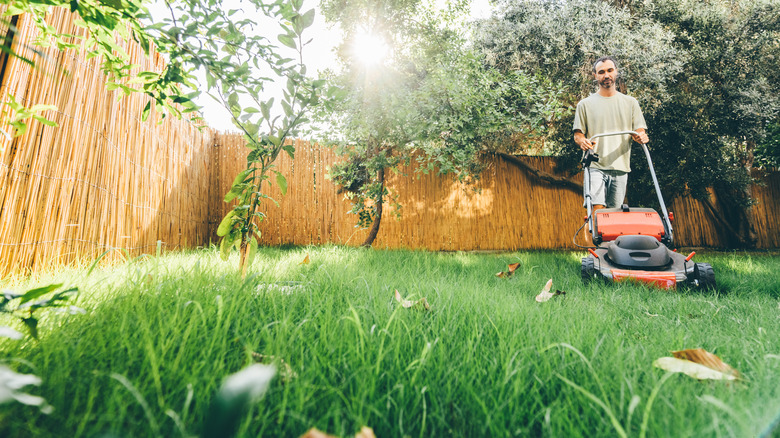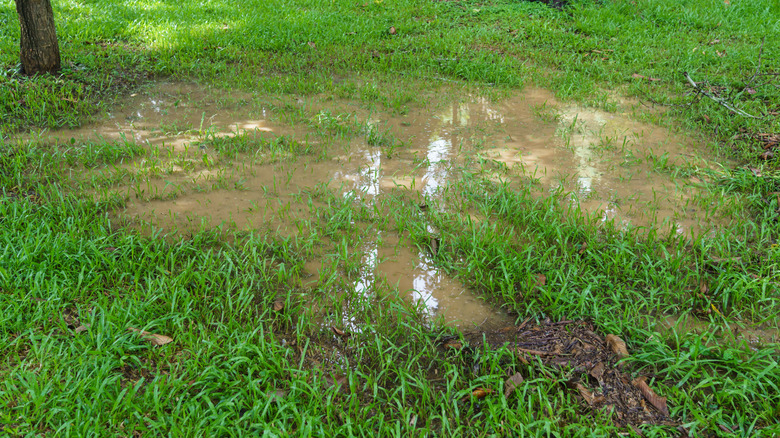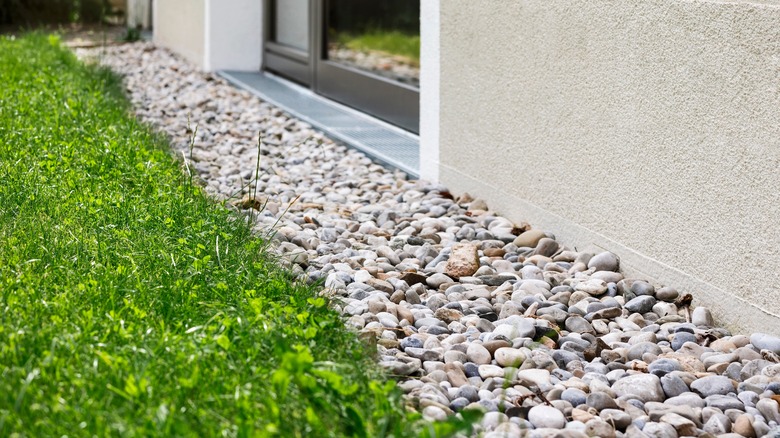The Scary Reason Your Lawn Smells So Bad (And How To Fix It)
Your lawn is supposed to be your outdoor sanctuary, a place to garden or even turn into a backyard oasis that is perfect for enjoying long summer days. But what do you do when your at-home respite area smells a little off? It might not seem like a big deal at first. You may even ignore it or brush it off as air pollution or something else. Unfortunately, lawn smells can have a scary cause that if not handled, can send you on a downward spiral of expensive fixes. This is because many lawn smells are often caused by poor drainage, which can lead to a buildup of bacteria that releases an unpleasant odor.
One issue that may be hard to decipher is whether the smell coming from your lawn is caused by poor drainage or another source. To determine the cause, you need to do a bit of research and examine both the visual elements and the smell. Do you notice water pooling in your yard after a rainstorm? Standing water is one of the main indicators that your drainage needs attention. When it comes to the stench, lawn drainage issues are known to cause a distinct sour smell. This can vary from other unpleasant odors, such as common smells from different types of plant life.
Types of drainage issues that can lead to odors
When you are dealing with standing water and stomach-turning smells, finding a drainage solution to keep your grass happy is key. However, before you can come up with a plan of attack, you will need to determine what is causing the standing water. Poor grading is the most common cause of drainage issues. Yard grading is the science behind how your lawn slopes in relation to controlling rainwater. If there is not enough slope within your yard, aka "positive grading", the water will sit, which then allows bacteria to grow.
Any type of standing, stagnant water can be a breeding ground for anaerobic bacteria and pathogens like E. coli. If you have a septic system, you may have an even greater risk of odors stemming from drainage issues. For most homeowners, resolving poor drainage can be pretty straightforward. For example, if your home has improperly placed downspouts, this can lead to water sitting right at the exit points. The simple fix is to add a downspout extension. Even if the solution is not so straightforward, drainage issues will need to be resolved.
How to prevent drainage smells from taking over your lawn
Once you know the cause of the odor emanating from your lawn, you can take steps to fix it. One common remedy is aeration. You can even try a DIY lawn aerator for those on a budget. The process involves adding tiny holes all across the soil surface to help improve airflow and drainage. Aeration can be completed manually or with a mechanical tool designed to create precise openings. While aeration is not an ideal solution for a yard with severe sloping, it can help with overall lawn health and reduce smaller amounts of standing water.
Homeowners dealing with more demanding water problems might want to consider installing a French drain. These drains work similarly to trenches in that they allow excess water to flow down into a pipe. The water then travels through the pipe, away from your lawn, preventing puddles from forming. It is common for French drains to be filled with some type of gravel to help the water flow without becoming clogged from built-up debris. If you are not sure which method to pursue for your smelly lawn, you may want to reach out to a licensed professional for advice.


